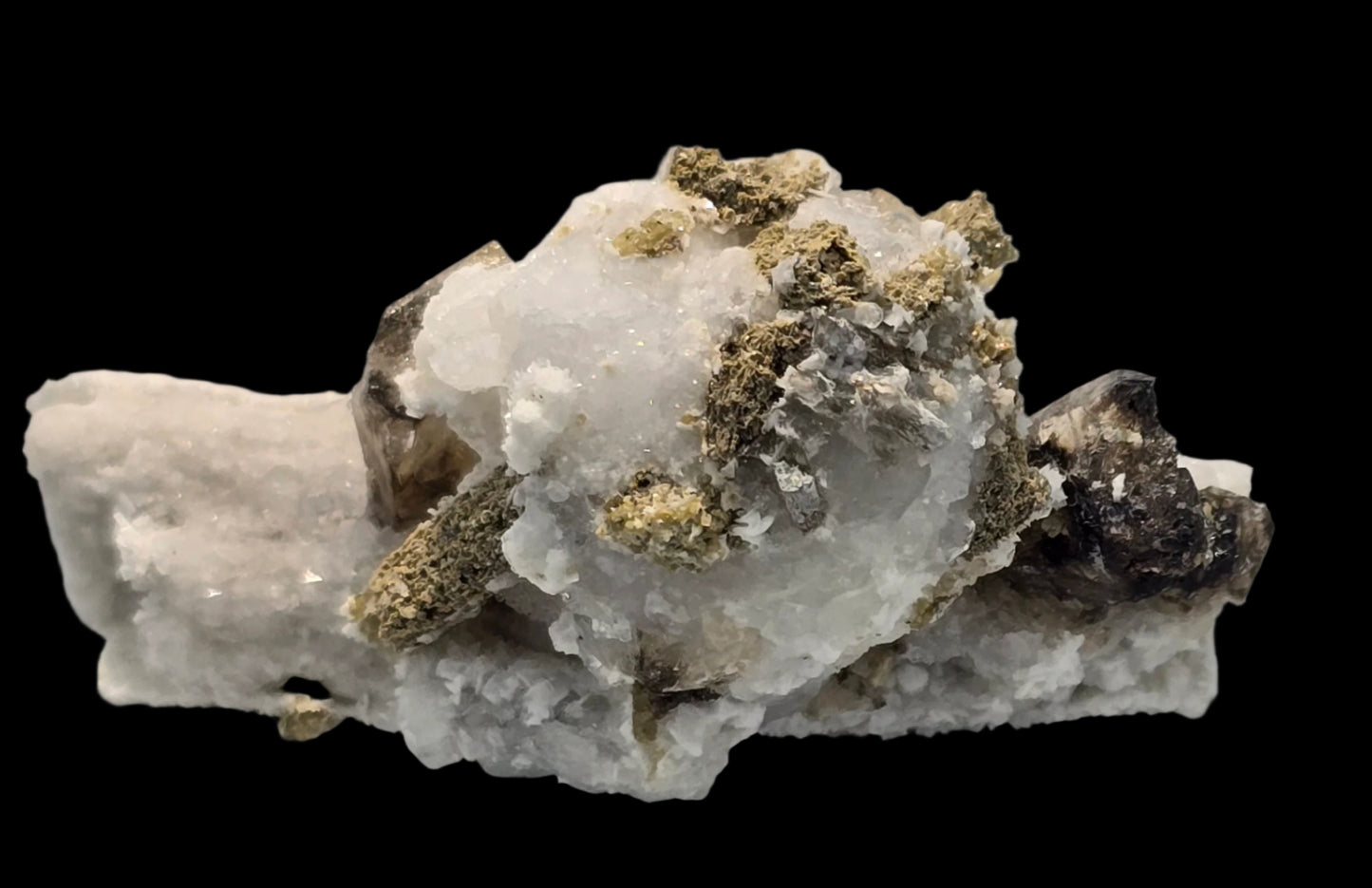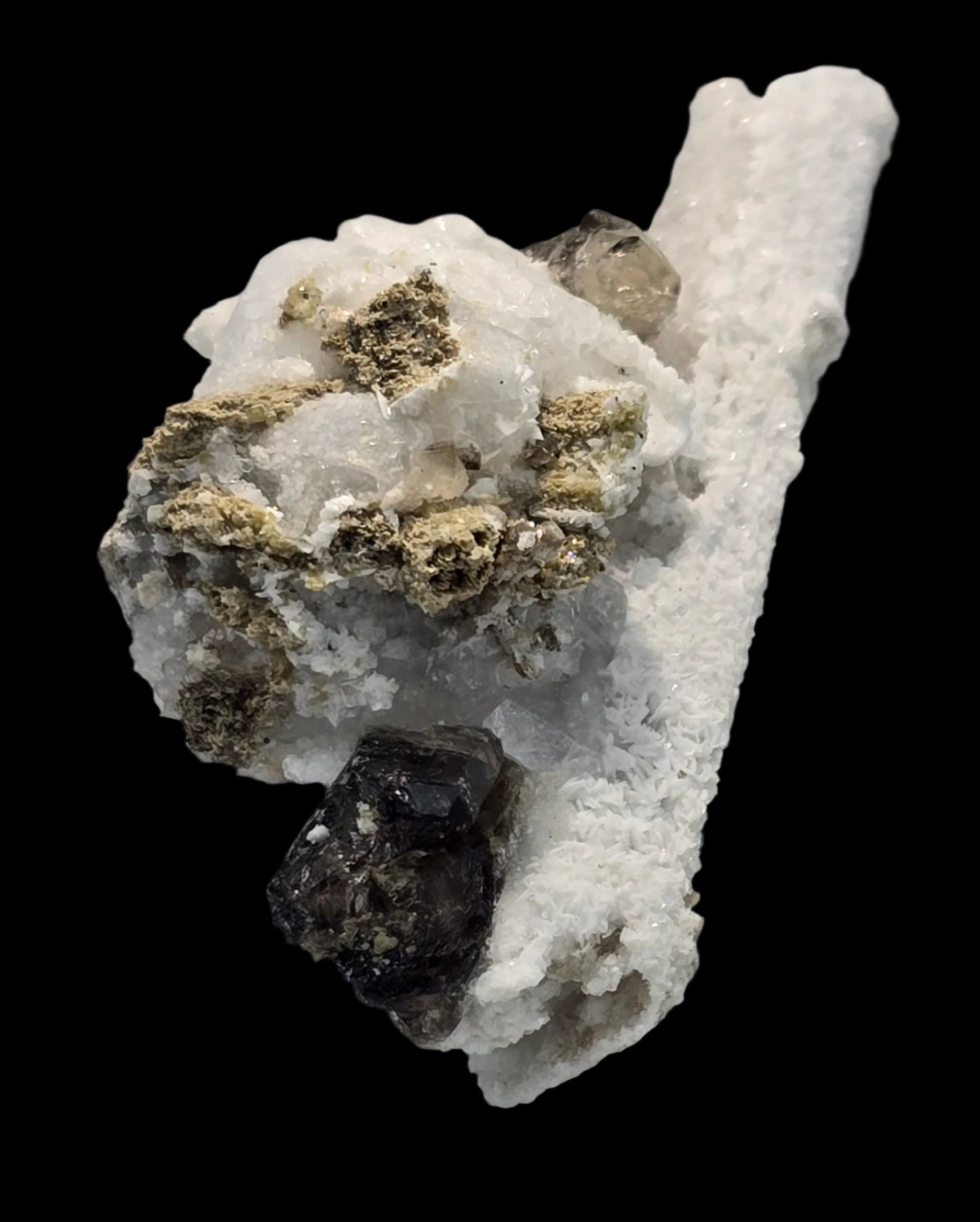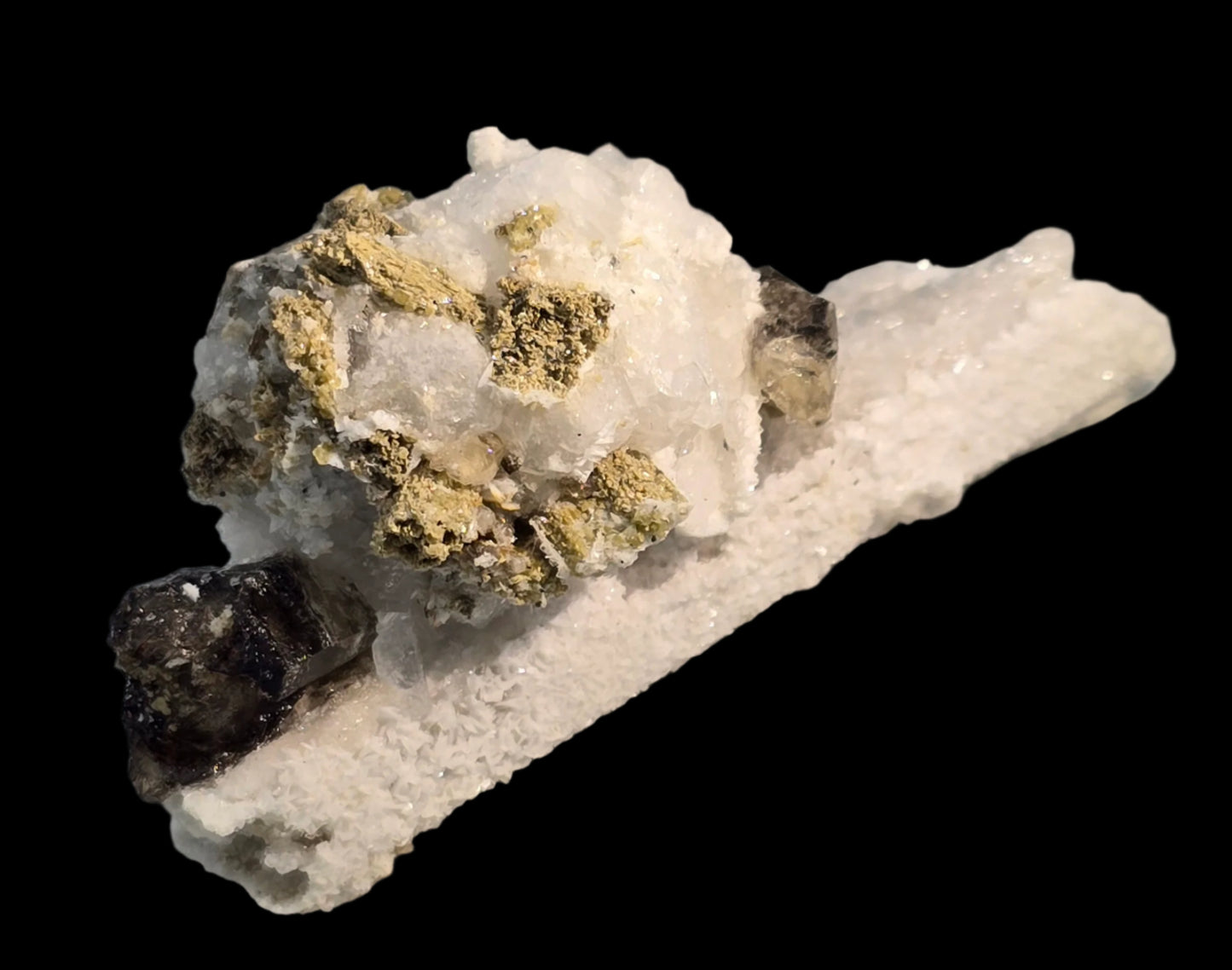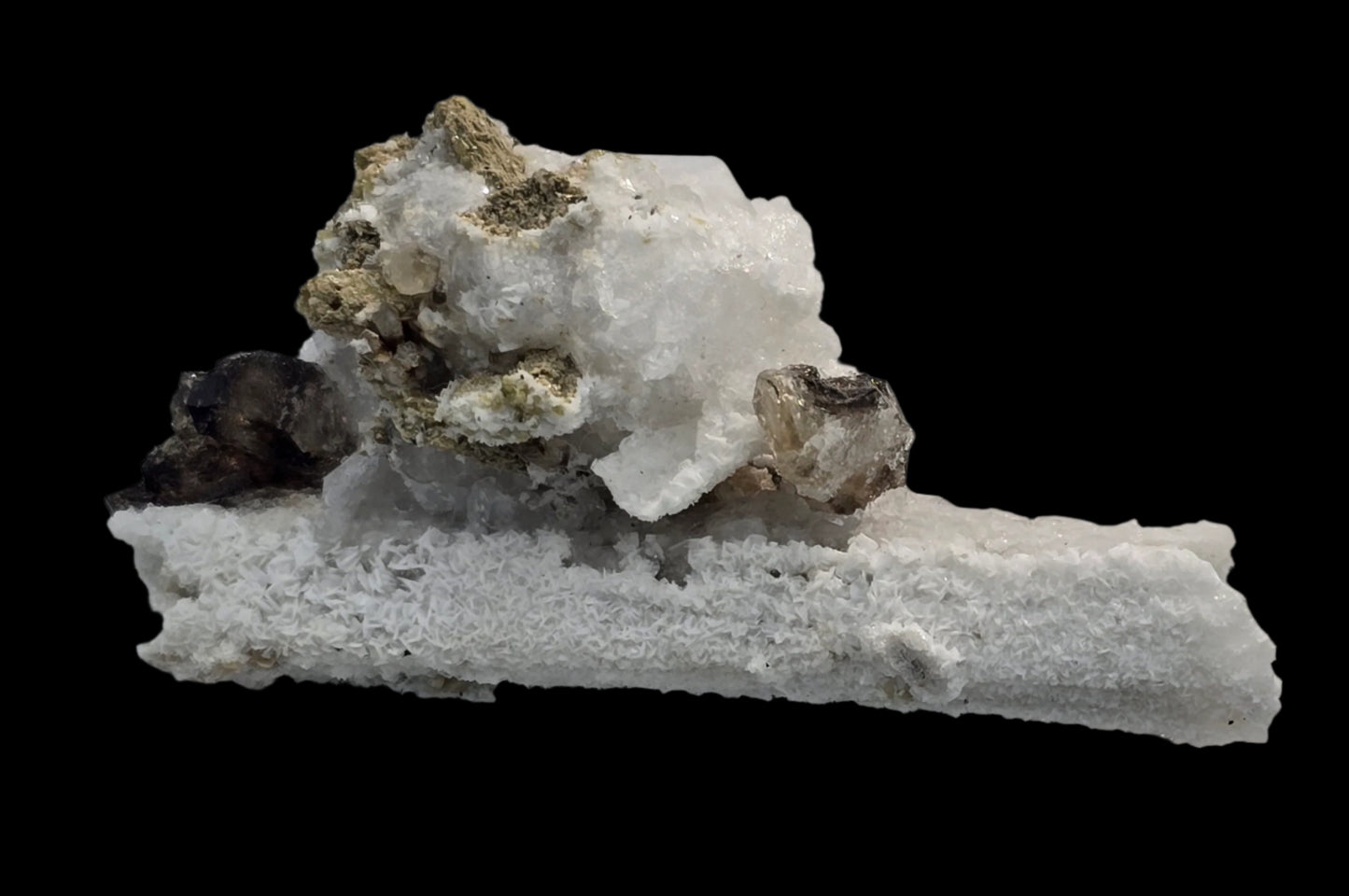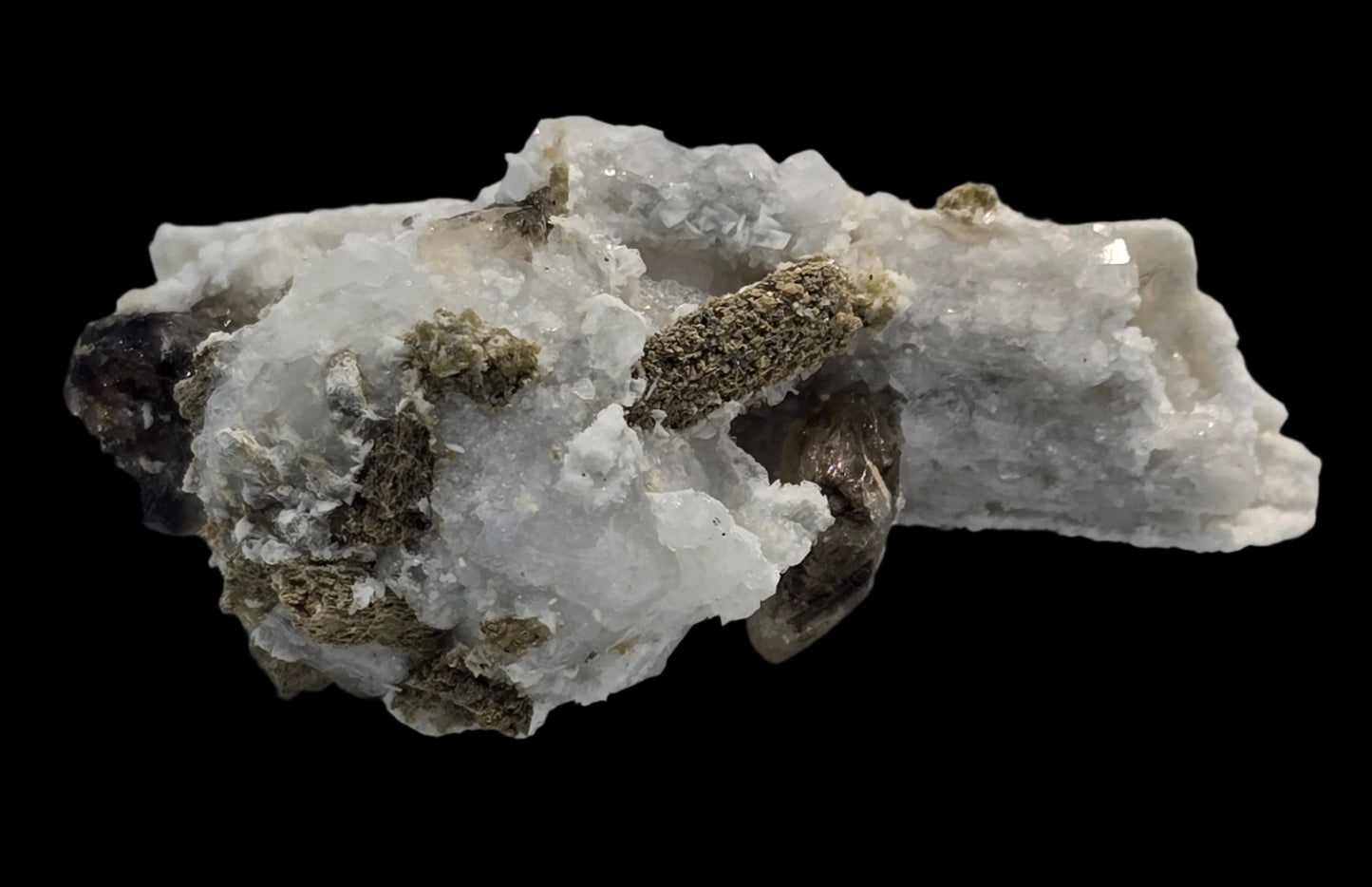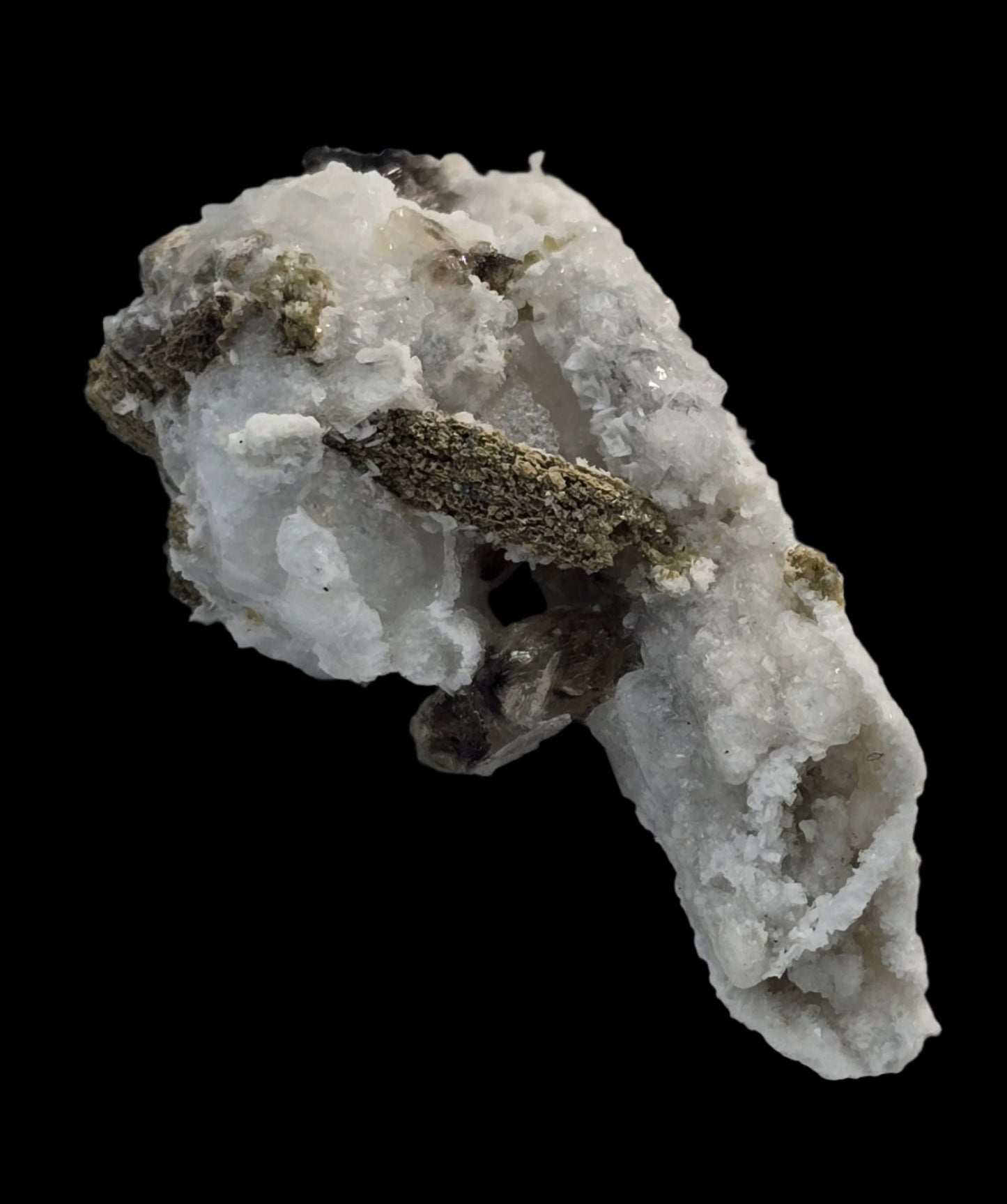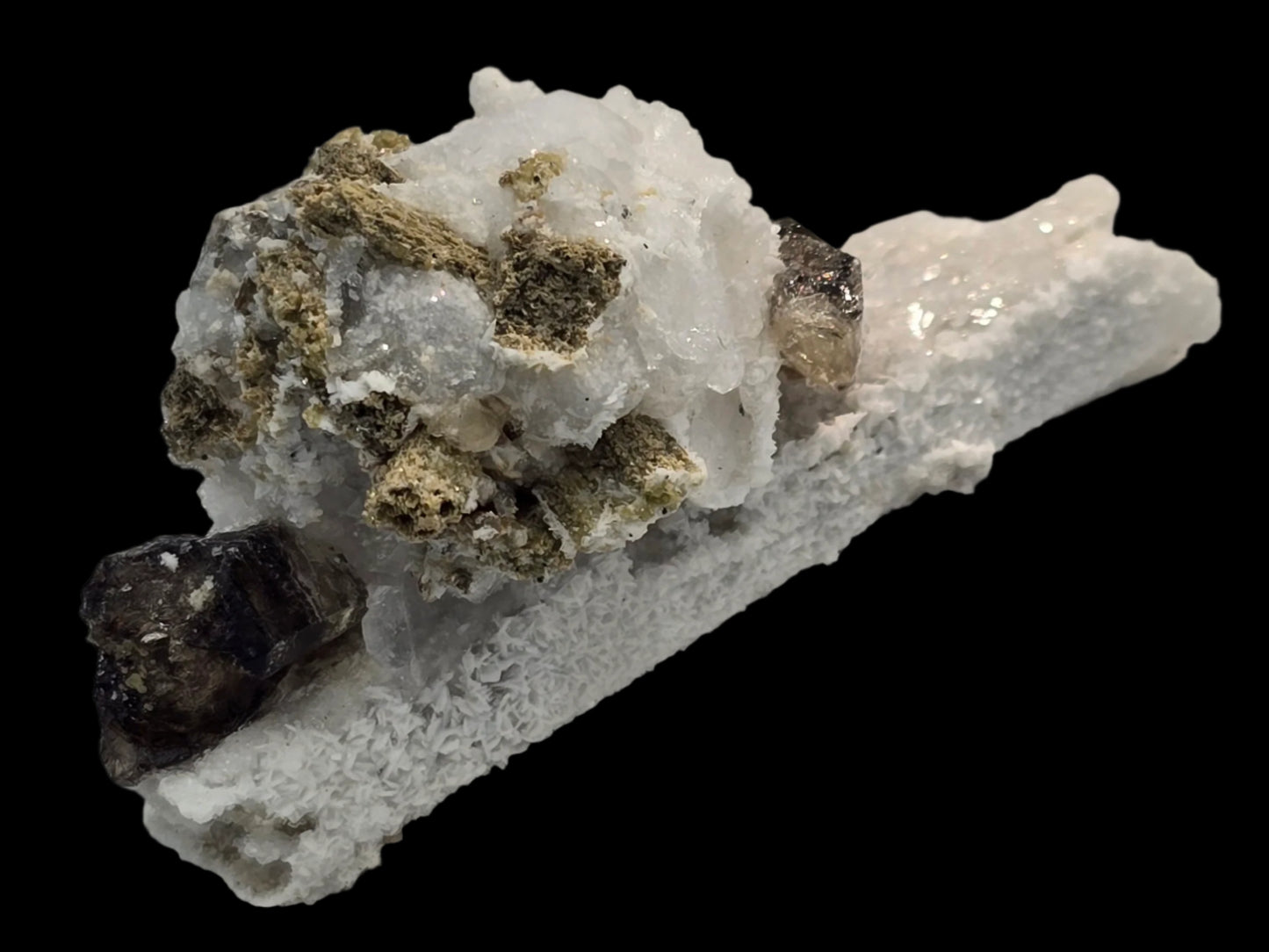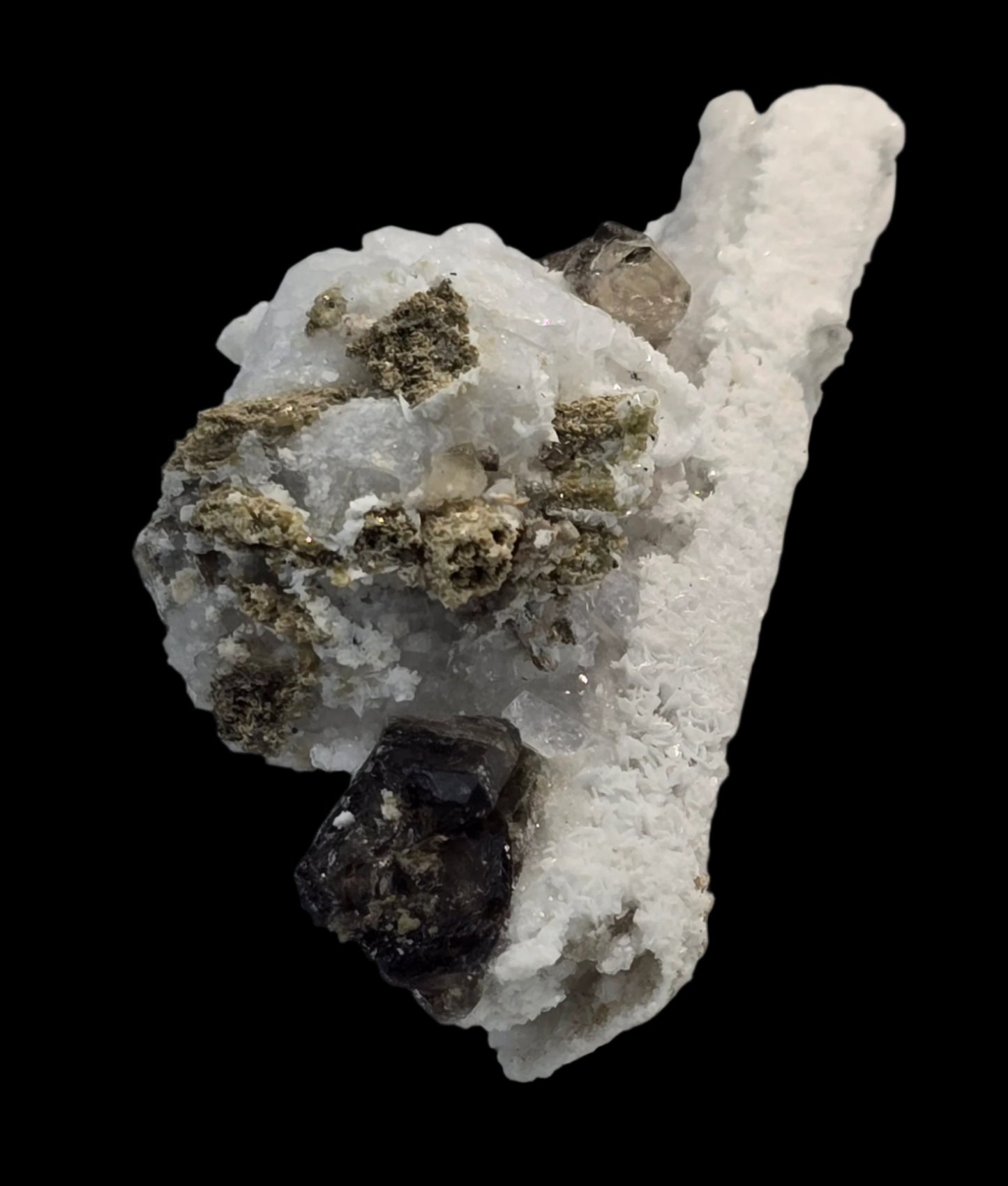ANALCIME PSEUDOMORPH AFTER ANALCIME AND NATROLITE
ANALCIME PSEUDOMORPH AFTER ANALCIME AND NATROLITE
SPECIMEN NR #:
Analcime, also known as analcite, is a tectosilicate mineral that appears in shades of white, gray, or colorless. It is composed of hydrated sodium aluminum silicate and crystallizes in a cubic form, with the chemical formula NaAlSi2O6 · H2O. There are minor substitutions of potassium and calcium for sodium, and a synthetic variant containing silver, referred to as Ag-analcite, also exists. While analcime is typically categorized as a zeolite, its structural and chemical properties align more closely with feldspathoids. Although its crystal structure is generally considered isometric, slight angular discrepancies complicate its classification, with some truly isometric samples present. The subtle variations among samples have led to the consensus that multiple species names are unnecessary, making analcime a notable example of minerals that can exist in various crystal systems and space groups. The mineral was first identified by French geologist Déodat de Dolomieu, who referred to it as zéolithe dure, or hard zeolite, and it was discovered in lava formations in Cyclops, Italy. Analcime is recognized by the International Mineralogical Association and retains its status as a valid species.
Natrolite is a mineral species classified as a tectosilicate and is part of the zeolite group. It is a hydrated sodium and aluminum silicate with the chemical formula Na2Al2Si3O10·2H2O, and its type locality is Hohentwiel in Hegau, Germany.
The mineral was named natrolite by Martin Heinrich Klaproth in 1803, with the name originating from the Greek word for soda, "natron," reflecting its sodium content, and "lithos," meaning stone. Informally referred to as needle stone or needle-zeolite, this designation highlights the typical acicular form of its crystals, which are often slender and arranged in divergent tufts. The crystals may also exhibit epitaxial overgrowths of natrolite, mesolite, and gonnardite in various configurations.
Specimen details
Specimen details
To find the dimensions and weight of a specimen, please add the product to your basket. Alle details will appear here. Remove the specimen if unwanted. The numbers under "variant" are the measurements in mm and mostly added weight in grams. Where known, the origin of the specimen is mentioned. The number at the end, is the specimen number in our collection. Colours may vary, due to photography.
Care
Care
It's important to know that many minerals can be effectively cleaned with water. However, before using any cleaning methods, such as dissolvers or ultrasound, please take the time to research online. Improper use of these techniques could potentially harm your specimen.
Shipping
Shipping
Shipping fees depend on the weight of your order and its destination, and they will be calculated at checkout. Not all platforms use the same rate. We will inform you about any rebates where possible. If you have any questions, feel free to reach out to us before placing your order. We strive to use the most economical shipping methods for your specimens and combine multiple orders to minimize costs. Please note that packaging is included in the shipping fees.
Share http://www.facebook.com/crystals2collect
Couldn't load pickup availability
